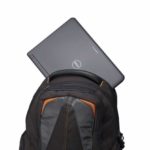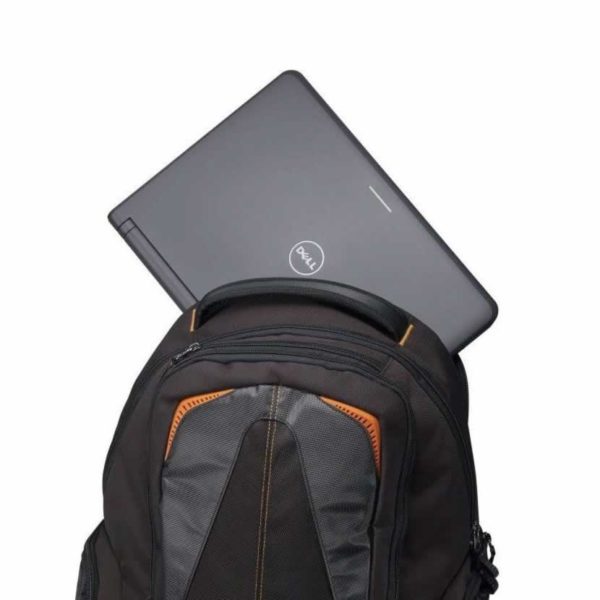Manufacturers such as Dell, Lenovo, and ASUS have introduced new laptops in recent months

With so much recent focus on tablet computers and Chromebooks, it might seem as if traditional laptops have become passé for education. But that’s not the case, as manufacturers have continued to make laptop innovations designed to appeal to schools.
On March 6, Dell announced a new series of laptops for students. Dell’s Latitude 13 Education Series features a durable design, a 13.3-inch screen, and a full-size keyboard—making it ideal for content “creation as well as consumption,” said Jon Phillips, director of worldwide education for the company.
The Latitude 13 laptops include rounded corners and a rubberized, shock-absorbent trim. Phillips called the laptops “student friendly and backpack tested,” but he said they stop short of meeting the fully “ruggedized” specification—allowing them to be lighter and less costly for schools.
The devices’ keyboards feature a fully sealed design, so they can withstand spills—which “happen commonly” in schools, he noted.
Schools can choose from among Windows 7 or Windows 8 operating systems and touch-screen or non-touch options. The touch-screen version includes scratch-resistant Corning Gorilla Glass, and the non-touch version includes a choice of red or blue trim as well as black.
Another innovation in the Latitude 13 laptops is a more “robust” hinge, Phillips said, that allows for flexibility beyond 180 degrees.
Through field observation and customer input, he said, Dell had determined that many of the screen breakages schools were experiencing came from students trying to open their laptops beyond their intended range of motion.
With the Latitude 13, however, students can push the device fully flat on a desk or other surface.
(Next page: How the Latitude 13 can help teachers make sure their students are on task—and new laptops from Lenovo and ASUS as well)
A unique feature of Dell’s new laptops is a “network activity light” that indicates when a student is using the wireless LAN.
“As a teacher, I can pretty quickly see if students are interacting with the network,” Phillips said, adding that this could be useful when students are taking an exam or in other cases where they should, or shouldn’t, be online.
The Latitude 13 laptops are available with Intel Celeron, Core i4, or Core i5 processors. They include 32-bit or 64-bit configurations and start at $399 for a non-touch Celeron version.
“We’re excited about this newly designed Latitude series for education,” Phillips said. He added that it’s important for companies like Dell and others to offer a full portfolio of options for schools, to meet a wide range of student needs—including laptops, tablets, and Chromebook devices.
Dell isn’t the only computer maker offering a new line of laptops for schools.
During the Florida Educational Technology Conference in January, Lenovo unveiled its ThinkPad 11e series of laptops, designed specifically for education and fully ruggedized for student use.
The ThinkPad 11e series is available in two form factors, said Sam Morris, education solutions manager for Lenovo: traditional “clamshell” laptops or an innovative “Yoga” design, with four unique positions: laptop, tablet, tent, and stand.
The Yoga design features a hinge that rotates 360 degrees, turning the laptops into touch-screen tablets while maintaining the ruggedness that students need, Morris said. He said Lenovo’s Yoga design gives students a system that can adapt to their needs, based on the content they’re working with.
For each of these form factors, schools can choose Windows or Chromebook options. The ThinkPad 11e laptops feature 11.6-inch screens and Intel processors, and the Windows versions come with optional applications such as LanSchool and webNetwork to make management of the devices easy.
The clamshell design costs $349 for the Chromebook version and $449 for the Windows version. The Yoga design adds about $100 to the cost of each option.
A Lenovo white paper makes a case for why schools should consider investing in fully ruggedized devices. It says an independent market research firm found Lenovo’s repair rates for laptops to be lower than its competitors’ in a recent study.
Meanwhile, ASUS last fall introduced what it calls “Transformer Books,” which also combine the productivity of laptops with the flexibility of tablets.
The ASUS Transformer Book T100 is a “two-in-one” ultraportable laptop whose 10-inch touch screen detaches from the keyboard to become a standalone tablet computer. The device runs Windows 8.1 and features an Intel quad-core processor and up to 11 hours of battery life. A 32GB version costs $349, and a 64Gb version costs $399.
The ASUS Transformer Book T300 offers the same concept, but with a larger (13.3-inch), full-HD screen. It runs on Windows 8 Pro and features an Intel Core i7 processor and up to eight hours of battery life.
Follow Dennis Pierce on Twitter: @eSN_Dennis.
- Can technology help schools prevent AI-based cheating? - April 14, 2023
- How to ensure digital equity in online testing - July 6, 2022
- ‘Digital skills gap’ threatens innovation - May 30, 2022



Comments are closed.